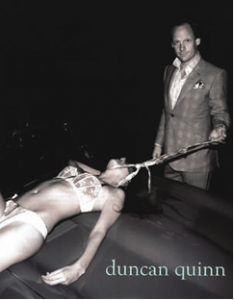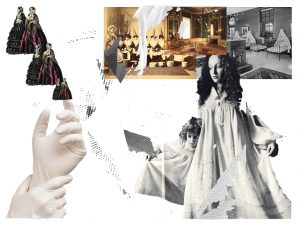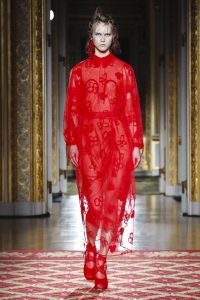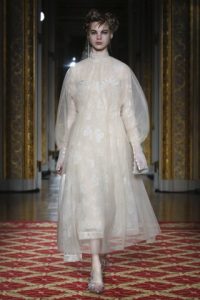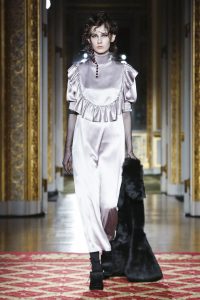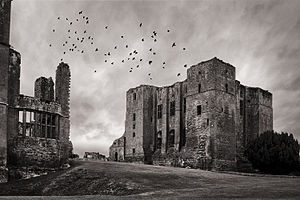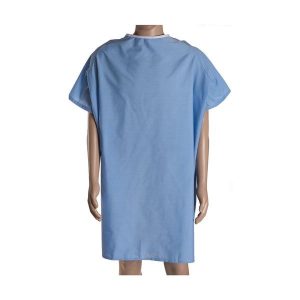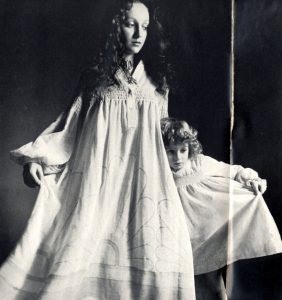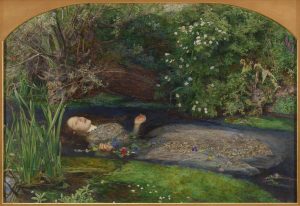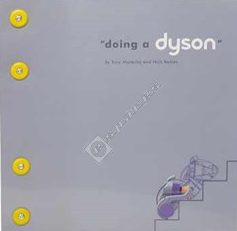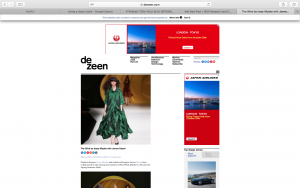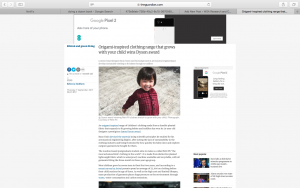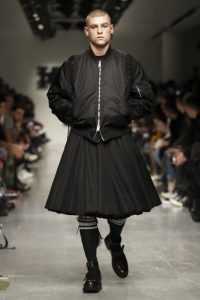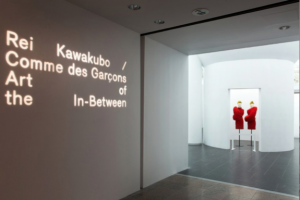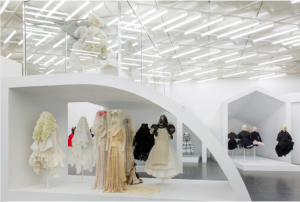Out of the two articles provided, I decided to choose the first article given which was an extract from the Fashion Media: Past and Present edited by Djurdja Bartlett, Shaun Cole and Agnes Rocamora book titled ‘TASTE, FASHION AND THE FRENCH FASHION MAGAZINE by sanda miller’ which I thought would be a more interesting and diverse topic to research, analyse and write in-depth about.
After giving the article a brief read it allowed me to gain a quick overview of the basis topic of subject the article is specifically explaining. The whole article discusses the overall impact and evolution of fashion magazine and fashion illustration’s and how different social classes/ social diplomats and the hierarchal system focuses on the 17th/18th century – how the ‘French Revolution’ affected the fashion industry of that era, and in-contrast to today’s modern era (in correspondence to taste in fashion). When reading through the article, I found that the first segment discussed the views on the revelation of magazines (in France, referred to as Gazette’s) in which first came around in 1672 and how it’s re-emergence gained popularity from 1724 to today’s modern era. Then the article follows on focusing on societies development on taste and how people respond to the artwork themselves as well as talking about philosophical aesthetics and how people’s individual psychologies determines their own opinions not “personal avowals (Bartlett et al. 2013)”. This specific paragraph also discusses the contrast between two societies by stating one of the groups as “ill-educated (Bartlett et al. 2013)” and “largely uneducated public (Bartlett et al. 2013)” and in contrast the other group stated as “art critics (Bartlett et al. 2013)” to show the difference in their intellect and intelligence discussing about a “… complex iconographical programme… (Bartlett et al. 2013)”. Moving on from that, the article then confers about a new emergence of a journalist/reviewer/art critic in which in France at the time was ‘Denis Diderot (1713-1784)’ in which in this time-era denotes the points of development and progression of magazines and art critics. The overall paragraph then ends on how the start of the first publicised fashion magazine in France revolutionised the industry developing people’s understanding on the subject and broadening their tastes and opinions in the art community. Lastly, the final paragraph entails the topic of conversation about fashion illustrators and plates in which they created – as well as discussing the differences and similarities of both Fashion Plates and Costume Plates. However, the writer also moves on to question how the ‘French Revolution’ had affected the taste of fashion? In which led to the occurrence of a new society/customer focal point described as “urban, female leadership (Bartlett et al. 2013)” and the fact fashion magazines soon begin to globally dominate the world. Reading further into this specific paragraph and analysing in-depth, I feel that the up-rise of the fashion plates were quite politically driven and almost used as ‘propaganda’ – as well as used to gain inspiration from.
To evaluate further, I looked at a quote which was “There is room for a good deal of explainable variability since different works of art will appear to different temperaments or at different stages of life. (Bartlett et al. 2013)” from the article in the second paragraph/chapter stated as ‘TASTE AND THE EMERGENCE OF THE CRITIC’ due to the fact it linked well with what I was expressing in my second paragraph about the main subject choice of the article – and discussing the topic of different social classes and how art is seen diversely between a multitude of people. Overall, this quote is discussing the topic of conversation about the arrival of the ‘art critic’ suggesting that in that era’s (the ‘French Revolution, 16/17th Century) society it’s beginning to become less constricted and constraint and more open and accessed to a wider range of people. By using word choices such as variability and temperaments it emphasises the articles point purely on the basis that together both insinuate that, in this specific moment in time, the art critic is “explainable variability (Bartlett et al. 2013)” meaning its spread inexplicably but at “different temperaments (Bartlett et al. 2013)” linking back to the main theme of the article on a wide spectrum of social hierarchy and their individual personalities and acquired tastes (within the fashion industry). Moreover, the quote also implies not everyone thinks in the same way as people’s mentality’s have evolved to contain a wide array of views and opinions. Furthermore, hidden in the text I can relate it back to the way art affects a diverse spread of societies as art is so malleable and easily altered due to the distinct communities of people having “…different temperaments… (Bartlett et al. 2013)”.

Article 1: ‘Fashion Media: Past and Present – Edited by Djurdja Bartlett, Shaun Cole and Agnes Rocamora’.
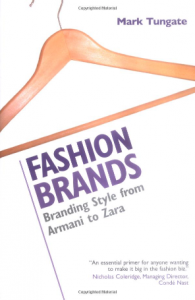
Article 2: ‘Fashion Brands: Branding Style from Armani to Zara 2nd Edition – by Mark Tungate’.
Developing my analysis further, I decided to find another piece of text from a different book/article which relates back to the main subject of the first article as well as linking to the fashion industry – focusing on the magazines, fashion illustrations and art critique especially. So, when looking for another piece of text similar to the ‘Fashion Media: Past and Present – ‘TASTE, FASHION AND THE FRENCH FASHION MAGAZINE’ by sanda miller’, I came across the book ‘Fashion Brands: Branding Style from Armani to Zara (2nd Edition) by Mark Tungate’ in which endeavoured a chapter about the subject of fashion illustrators stating the fact they’re a form of media to express taste in fashion – linking in with the first article I analysed. I particularly liked the quote from the second article I read which was “the expressionist, abstract aesthetic of illustration is increasingly seen as a fresh, more subtle – and attention-grabbing – alternative to computer graphics and photography (Tungate, 2012)” mainly as it expresses multiple views based on the miscellaneous and diverse array of fashion illustrations and how they are “…abstract… (Tungate, 2012)” and “…alternative… (Tungate, 2012)” which correlates back well to the first article which discusses how the art industry back in the 16th/17th century in France was quite varied and contained “different temperaments (Bartlett et al, 2013)” in which corresponds perfectly with the second article’s discussion on diverse, different and distinct views upon alternative and abstract artworks.
In addition to that, another book I came across was ‘Adorned in Dreams: Fashion and Modernity’ which an extract from Chapter 2: The History of Fashion articulated similarly to both texts the ‘Fashion Media: Past and Present – ‘TASTE, FASHION AND THE FRENCH FASHION MAGAZINE by sanda miller’ and the second book, ‘Fashion Brands: Branding Style from Armani to Zara (2nd Edition) by Mark Tungate’. In particular, the quote “Fashion speeded up and proliferated to keep pace with modern life. Going off in one direction it matched and expressed the compartmentalized, obessionally sub-divided life of the bourgeoisie. (Wilson, 2009)” I find relates well with the first article written by sanda miller due to the fact they both discuss points stating fashion has “proliferated (Wilson, 2009)” and is progressively evolving as well as being “speeded up (Bartlett et al, 2013)” – similarly the sanda miller text conveys the same idealism stating that “…the emergence… (Bartlett et al, 2013)” of taste and fashion “…gradually acquired the wider intellectual profile… (Bartlett et al, 2013)” soon gaining “global dominance (Bartlett et al, 2013)”.
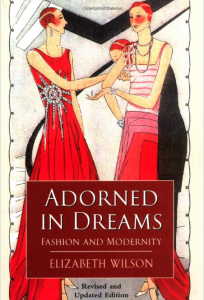
Article 3: ‘Adorned in Dreams: Fashion and Modernity – by Elizabeth Wilson’.
References:
- Bartlett, D and Cole, S and Rocamora, A (2013) Fashion Media: Past and Present, 1st Edition, London/New York, Bloomsbury Academic.
- Tungate, M (2012) Fashion Brands: Branding Style from Armani to Zara, 2nd Edition, Kogan Page.
- Wilson, E (2009) Adorned in Dreams: Fashion and Modernity, I B Tauris & Co Ltd; Rev. ed edition.

